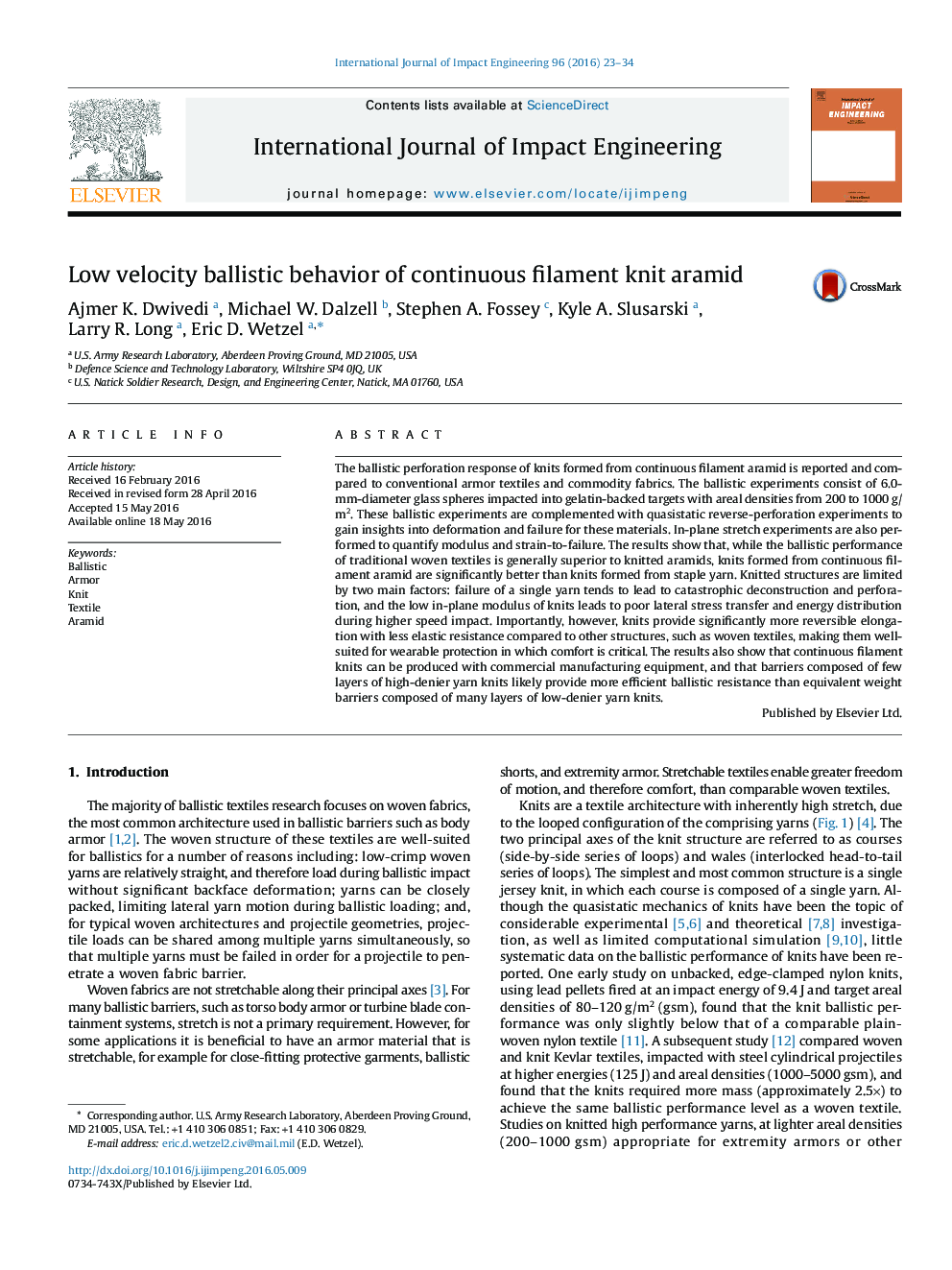| کد مقاله | کد نشریه | سال انتشار | مقاله انگلیسی | نسخه تمام متن |
|---|---|---|---|---|
| 776237 | 1464055 | 2016 | 12 صفحه PDF | دانلود رایگان |
• Ballistic perforation behaviors of lightweight knits are compared with other textiles.
• The best performing knits are composed of continuous filament aramid yarns.
• Felts and wovens provide better per-mass perforation resistance, but do not stretch.
• High speed imaging reveals a “weakest link” failure mode in knits.
• Continuous filament knits provide a unique solution for stretchable armors.
The ballistic perforation response of knits formed from continuous filament aramid is reported and compared to conventional armor textiles and commodity fabrics. The ballistic experiments consist of 6.0-mm-diameter glass spheres impacted into gelatin-backed targets with areal densities from 200 to 1000 g/m2. These ballistic experiments are complemented with quasistatic reverse-perforation experiments to gain insights into deformation and failure for these materials. In-plane stretch experiments are also performed to quantify modulus and strain-to-failure. The results show that, while the ballistic performance of traditional woven textiles is generally superior to knitted aramids, knits formed from continuous filament aramid are significantly better than knits formed from staple yarn. Knitted structures are limited by two main factors: failure of a single yarn tends to lead to catastrophic deconstruction and perforation, and the low in-plane modulus of knits leads to poor lateral stress transfer and energy distribution during higher speed impact. Importantly, however, knits provide significantly more reversible elongation with less elastic resistance compared to other structures, such as woven textiles, making them well-suited for wearable protection in which comfort is critical. The results also show that continuous filament knits can be produced with commercial manufacturing equipment, and that barriers composed of few layers of high-denier yarn knits likely provide more efficient ballistic resistance than equivalent weight barriers composed of many layers of low-denier yarn knits.
Graphical AbstractFigure optionsDownload high-quality image (68 K)Download as PowerPoint slide
Journal: International Journal of Impact Engineering - Volume 96, October 2016, Pages 23–34
